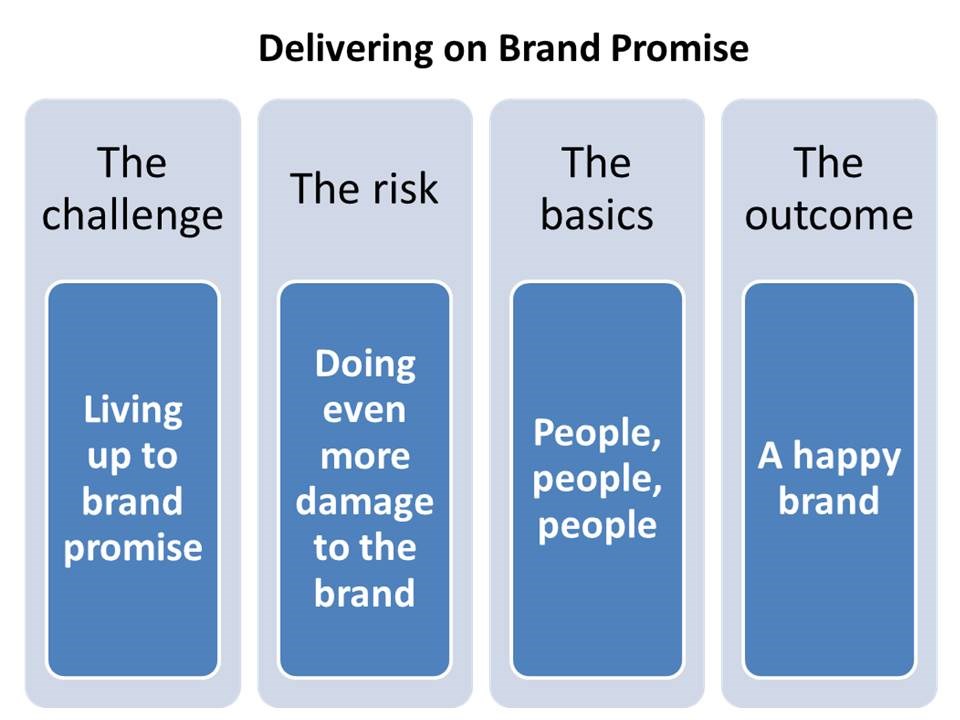
By Selvie Naicker
Customer experience is intimately related to an organisation's brand, in that it expresses how well a company delivers on its promises. Brands succeed or fail based on customer experience or 'CX'.
The challenge of living up to brand promise
Customers are increasingly interested in the actual delivery on brand promises. All too often organisations spend time, money and effort on rebranding, new logos or advertising campaigns in an attempt to change customers’ perceptions of their brand. Whilst these are useful initiatives, they do not necessarily meet the customer’s needs or address the burning issues, thereby failing to deliver what the customer truly values. Customers want the experience they have been promised via any of the channels available.
Doing even more damage to the brand
A strong brand promise can give an organisation a competitive advantage; however this advantage will be lost - or even reversed - if the organisation is unable to consistently deliver on its promises, resulting in damage to the brand.

What must be done?
Organisations are totally reliant on employees to deliver on the brand promise, a great service and excellent customer experience, which in turn is what makes the brand memorable. Companies need to continuously look internally and engage their employees on how to improve service and interaction with the customer - and organise accordingly around holistic CX management. This requires a sound understanding of staff needs and challenges, and supporting employees to deliver a better service. Cross-functional CX process leadership is needed to avoid silo effects.
A happy brand
When organisations deliver on their brand promise, customers will align themselves with the brand leading to the customer trusting the organisation, opening the door for repeat business.

Managing expectations
The organisation’s brand promise raises customer expectations whilst the customer experience is determined by how well the company delivers on its promise.Raising expectations before you are internally geared to deliver on them is likely to make customers even more frustrated.
Too many hoops
Sometimes organisations have too many steps in the process or too many hoops that the customer has to jump through, resulting in a frustrated customer and a complete about-turn in their perception of the brand.
From pillar to post
Having too many customer touch points can lead to the client being over exposed to the organisation's internal processes, being pushed from one division to the next, which inevitably leads to heightened frustration. To mitigate this, CX process leaders and key account managers need to spend time on the customer's turf, going through the processes with them, thereby obtaining first-hand information as to what it is like to be in the customer’s shoes, finding out where the gaps in their system are, and what can be done about it. Often this requires some re-design of internal processes; the goal should always be that the customer can move through the system with ease, having a frictionless experience.
Where does customer satisfaction measurement fit?
Most organisations conduct a customer satisfaction survey at least annually. While this is a necessary and valuable step with both strategic and tactical benefits, it may have unintended consequences on CX if not followed through on.
Asking customers about their interactions with your company automatically raises their expectations, especially in cases where they have had a negative experience and are disgruntled or desperately unhappy. In such cases, having vented their frustrations, the customer will be expecting things to change quickly and significantly for the better. It is important to turn insights into action by making necessary changes that would result in positive user experiences and thereby, once again, ‘reducing friction’. Conversely, it stands to reason that not taking any action will result in customers having an even more negative view of the organisation and brand, and ultimately drive them away.
The part doesn’t necessarily represent the whole
When measuring the service levels at each of the customer touch points, sometimes the assumption is made that the customer is satisfied with the entire organisation. This typically occurs when they have actually had a good experience with a single division or touch point. The same customer may have other pain points with the organisation, which could be missed if focusing too heavily on isolated performance scores and assuming the customer is generally happy.
A positive customer experience allows organisations to build long-lasting, meaningful relationships with their customers, which strengthens the brand. Customers feel valued, a relationship of trust is established and the customer is at ease.
[1] Graphic: Kevin Keller via https://darkmattermatters.files.wordpress.com



